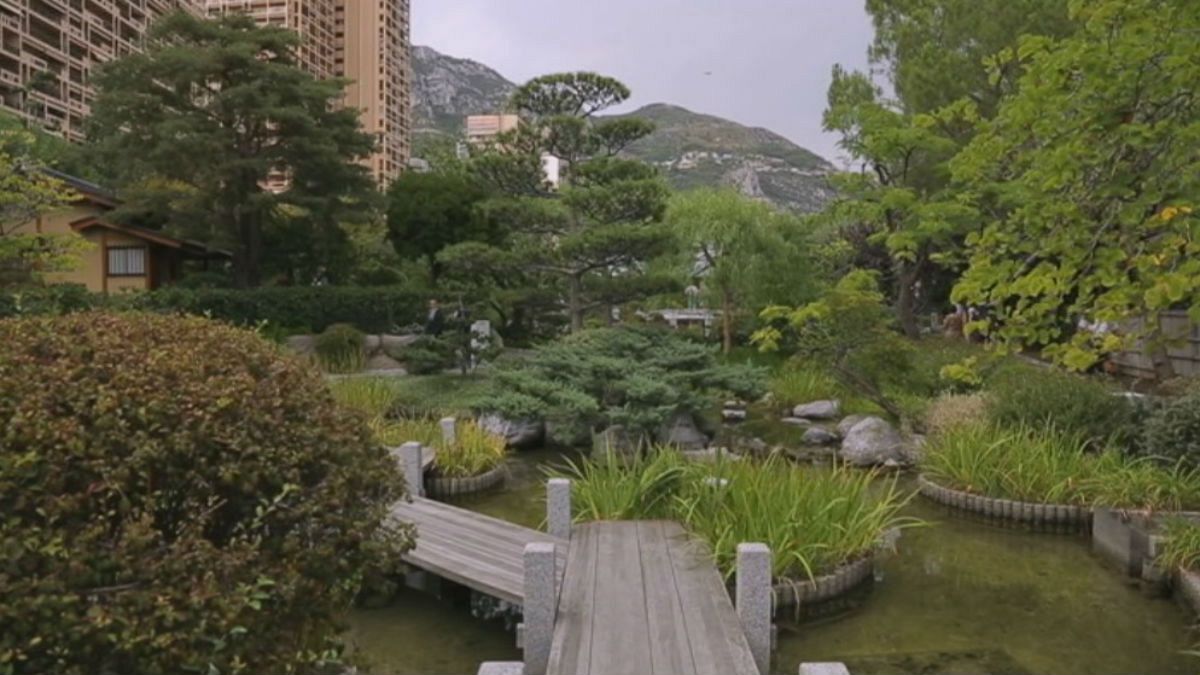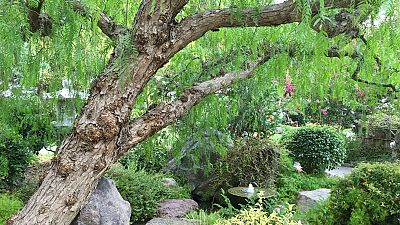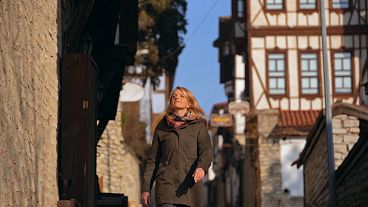The most striking thing when you arrive in Monaco is the density of the urban landscape. And yet, if you look closely, on the roofs, between the
The most striking thing when you arrive in Monaco is the density of the urban landscape. And yet, if you look closely, on the roofs, between the buildings, greenery is everywhere. Not to mention the gardens, some of which are world-renowned.
That’s certainly true of the Princess Grace Rose Garden, which was completely revamped for its 30th anniversary. It’s open to the public 24 hours a day.
As soon as you enter this garden, you cannot resist the bewitching fragrances. There’s enough to keep you busy: more than 6,000 rose trees, sorted by themes, share the 5,000 square meter space.
The idea is to allow visitors to get as close as possible to the flowers, says Jean-Jacques Pinotti, Deputy Technical Manager, Monaco planning department: “We’ve created, between the eds, small lanes that meander through the roses. And we covered these lanes with recycled materials. They’re natural peach stones.”
Back to Nature
The Rose Garden is a certified Ecological Vegetal Space, adds Pinotti: “We don’t use chemicals anymore, we use mostly biological allies, so ladybirds, syrphid flies, spiders. As for disease treatments, we use homeopathy.” This goes for all the public gardens and spaces in the Principality. And to treat the tall palm trees without blocking the traffic, the gardeners use drones, watering the plants from above.
Garden culture developed along with tourism in Monaco, at the beginning of the 20th century. Inaugurated in 1933, the Exotic Garden owes its creation to Monaco gardener Augustin Gastaud’s passion for succulent plants, says Jean-Marie Solichon, Exotic Garden Manager: “They (succulent plants) are plants with an enlarged organ which stores water.”
Today, the Exotic garden is managed by another enthusiast, botanist Jean-Marie Solichon.
“We still have some of Augustin Gasteau’s plants,” says Solichon. “That’s what makes the Exotic garden special, these plants that are more than 100 years old. These pretty golden cactuses are what the French call “mother-in-law’s cushions”. It’s true it’s not a welcoming plant at all. Our American colleagues are a bit kinder as they call these plants “golden barrels”, which is far more poetic indeed.”
The Exotic garden also has a mission of botanical conservation and shares vegetal materials with other gardens all over the world.
Eastern paradise
Elsewhere, The Japanese garden was created from scratch in the early 90’s under the tutelage of the Japanese garden designer Yasuo Beppu. “The garden designer Beppu made a point in following and applying the precepts taught in Kyoto’s schools,” says Pinotti. “It’s the realm of myths, legends; there are religious references.”
Everything, from the shape of plants to the layout of rocks and stones, was calibrated down to the last millimetre, as Pinotti explains: “The garden designer wanted to integrate into his garden a reference to the Mediterranean and to Monaco. And, if possible, an old tree, to give the notion of old age, of tradition, of the passing of knowledge through generations in Japan and in Japanese gardens, which is extremely vivid.” A Japanese person who visits this garden feels almost at home.’
Everybody In Monaco has a responsibility for the greenery. Real estate developers have a legal obligation to treat roof-terraces as gardens, encouraging the Principality’s residents to help with the greening the city.
That was the case for Monaco resident Aurelie’s family. “It’s my mother-in law, Brigitte, who created it from scratch. She designed it all. Everything is natural. For example, we have organic tomatoes and grapes,” says Aurelie.
“The plants are all local. We have olive trees, many cacti and so on that require little care, and gardeners come to look after them every two to three months, she adds. “It’s very important to have an outdoor space in Monaco to escape all this urbanisation.”



